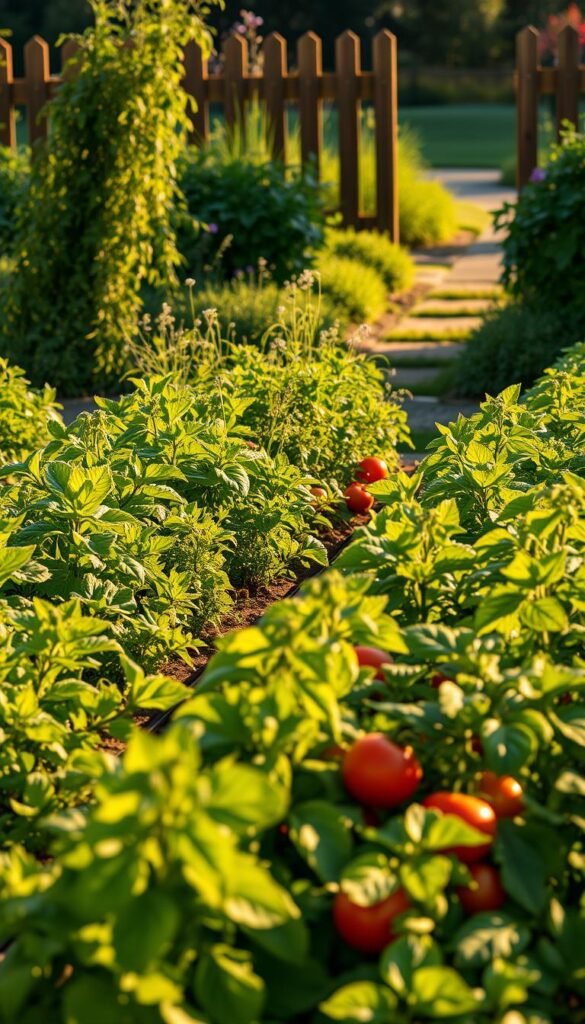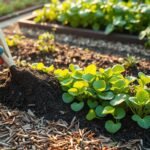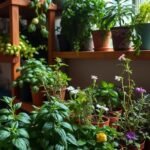Growing fresh produce at home starts with smart preparation. Take inspiration from experienced growers like Travis, who converted a 125×70-foot pine area into a flourishing plot. His journey began with clearing trees, refining soil structure, and precisely mapping the space—proving even ambitious projects succeed with thoughtful execution.
Your success begins by defining clear objectives. Do you want abundant harvests, a relaxing hobby, or eye-catching edible arrangements? Matching expectations to your available time and skills prevents frustration. Beginners often overcrowd plants or choose fussy varieties—mistakes easily avoided with structured guidance.
Proper groundwork makes all the difference. Start by testing sunlight patterns and improving soil quality. Many find the square foot gardening method ideal for maximizing yields in compact areas. This approach helps organize crops efficiently while conserving water and reducing maintenance.
Remember: Sketching your layout and researching plant needs creates a roadmap for success. Whether you’re growing juicy tomatoes or crisp greens, strategic placement ensures each plant thrives. With careful preparation, you’ll enjoy fresh flavors straight from your backyard while avoiding common pitfalls.
Choosing the Perfect Site and Garden Style
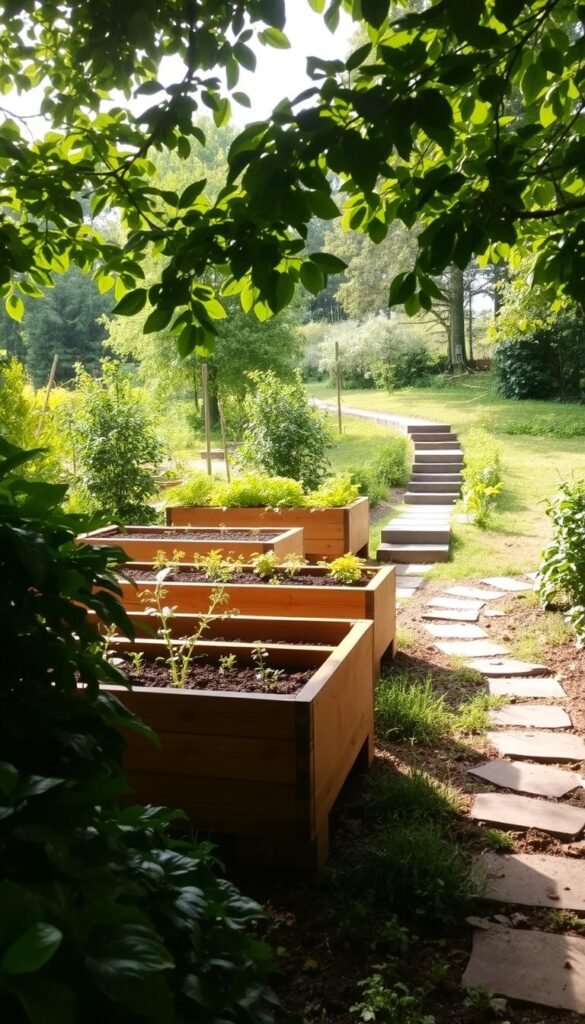
Your garden’s success hinges on two critical decisions: where to place it and how to design it. Let’s break down what matters most for thriving plants and effortless maintenance.
Sunlight, Water, and Smart Placement
Start by scouting your yard’s sunniest spot. Most crops need 6-8 hours of direct light daily—south-facing spaces often work best. Avoid areas shaded by buildings or large trees, as roots compete for nutrients and water.
Next, check water access. Position your plot within hose reach or near rain barrels. A visible location near windows lets you spot pests early and grab herbs while cooking.
Picking Your Garden’s Personality
Three popular layouts suit different needs:
- Raised beds (4 feet wide max) – Perfect for poor soil and better drainage
- Traditional rows – Ideal for large spaces with machinery access
- Square foot gardening – Maximizes small areas through dense planting
Leave 2-foot pathways between beds using gravel or wood chips. These materials suppress weeds while letting you move tools easily. For design inspiration, sketch your layout before breaking ground.
Dream Vegetable Garden: Planning Your Ideal Plot Step-by-Step
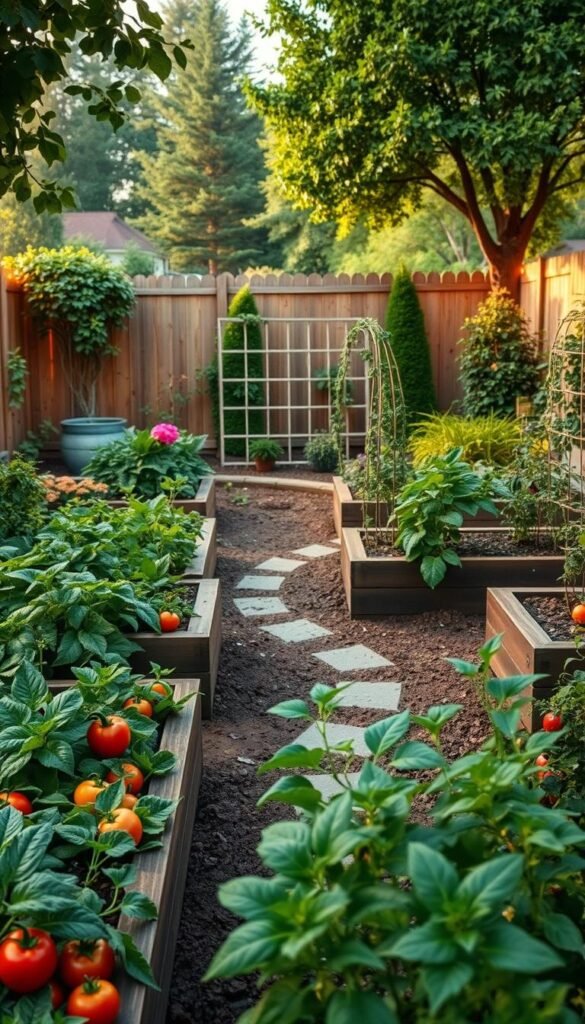
Transforming raw land into a productive growing area requires smart spatial organization. Whether you prefer pencil-and-paper sketches or modern apps, mapping your space helps avoid overcrowding and ensures proper sunlight distribution.
Sketching Your Layout on Paper or Using Digital Tools
Graph paper remains a classic choice—each square can represent one foot. This method lets you experiment with different arrangements for tomatoes, leafy greens, and climbing beans. For tech-savvy growers, tools like the Almanac Garden Planner calculate spacing needs automatically.
Travis’s 125×70-foot space shows how structure matters. He divided his area into six 30×35-foot subplots with 10-foot pathways. This design allowed easy tractor access while keeping each section manageable.
Designing Subplots for Effective Crop Rotation
Group plants by family in distinct zones to simplify yearly rotations. This approach prevents soil nutrient depletion and disrupts pest cycles naturally. Consider these groupings:
| Plant Family | Common Crops | Rotation Benefit |
|---|---|---|
| Nightshades | Tomatoes, Peppers | Prevents fungal diseases |
| Legumes | Beans, Peas | Restores nitrogen |
| Cucurbits | Squash, Melons | Breaks pest cycles |
Square subplots work best for crops needing pollination partners like corn. Leave 2-foot walkways between beds for comfortable maintenance. With thoughtful planning, you’ll spend less time battling weeds and more time enjoying fresh harvests.
Step-by-Step Vegetable Garden Planning Techniques
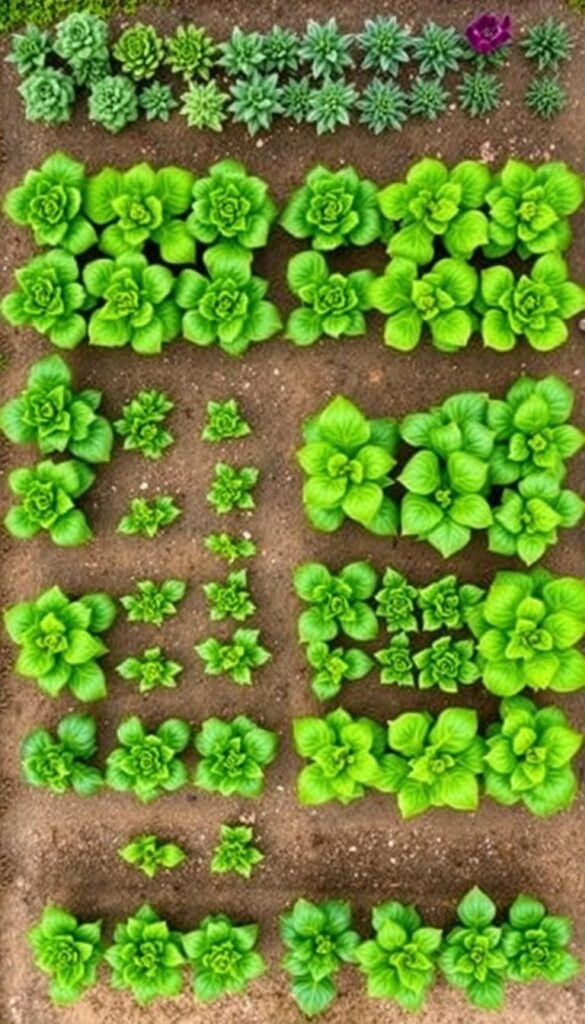
Creating a productive edible area requires balancing practicality with personal preferences. Start by asking three questions: What foods excite your taste buds? How much maintenance can you handle? What visual elements make you smile when stepping outside?
Aligning Ambitions With Edible Choices
Focus on crops you’ll actually eat—there’s no prize for growing vegetables that rot on the vine. If salads thrill you, allocate space for leafy greens and cherry tomatoes. Prefer stir-fries? Prioritize peppers and snap peas. For low-maintenance options, consider beginner-friendly varieties like bush beans or determinate tomatoes.
Mastering Spatial Math
Use this simple formula to prevent overcrowding:
| Plant Size | Examples | Space Needed |
|---|---|---|
| Compact | Radishes, Spinach | 4-9 per sq ft |
| Medium | Bush Beans, Kale | 1 per sq ft |
| Sprawling | Zucchini, Pumpkins | 2-4 sq ft |
Mark walking paths first using stakes or spray paint. This prevents accidentally planting in access areas.
Building Plant Partnerships
Some species thrive together like best friends. Try these power pairs:
- Nasturtiums + Cucumbers (traps aphids)
- Carrots + Onions (confuses root pests)
- Sunflowers + Pole Beans (natural trellis)
Tall corn stalks go north of shorter plants to prevent shading. Vining crops like melons work well along plot edges where they can spread freely.
Seasonal Timing and Seed Starting Strategies
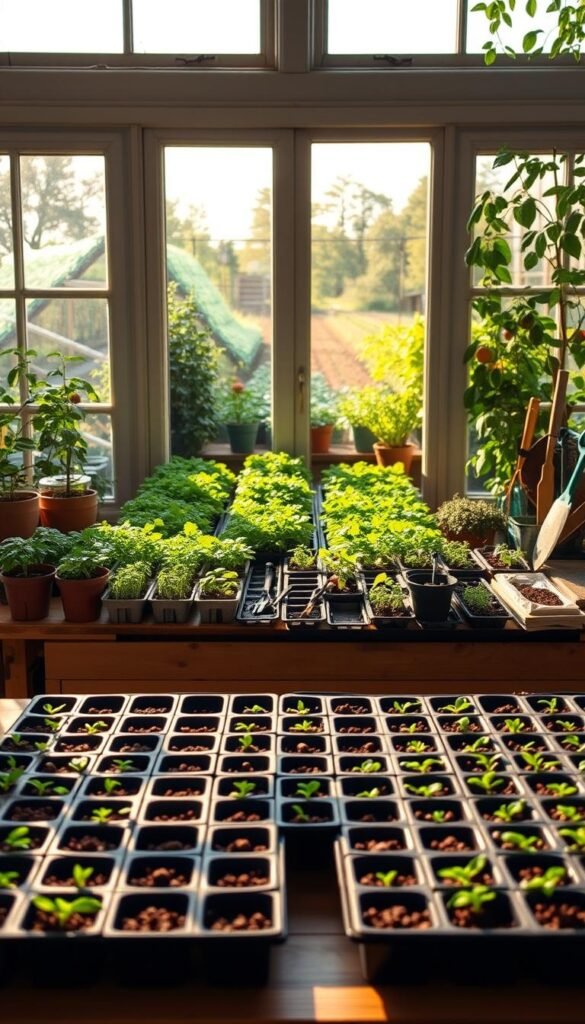
Your planting schedule acts as a roadmap to year-round fresh produce. Nail the timing, and you’ll enjoy crisp greens in spring, juicy tomatoes in summer, and hearty roots through fall.
Know Your Zone, Maximize Growth
Type your city plus “growing zone” into any search engine. This number unlocks customized planting dates. For example, Zone 6 gardeners start tomatoes indoors 6 weeks before May frosts.
Sow 5 seeds for each desired plant. Even quality seeds only sprout 80% of the time. This buffer ensures you’ll have enough seedlings to fill your layout.
Stagger Plants for Constant Harvests
Cool-weather crops like lettuce thrive when planted every 14 days. Use this table to plan replacements:
| Quick Harvest | Single Harvest | Replant With |
|---|---|---|
| Spinach (30 days) | Garlic | Bush beans |
| Radishes (25 days) | Cabbage | Kale |
| Basil (all season) | Potatoes | Fall carrots |
Heat-loving plants need prime real estate. Reserve sunniest spots for peppers and eggplants. Start these indoors 8 weeks before transplanting.
Mix nutrient-rich soil for seedlings 1 month before moving them outside. This gives microbes time to activate, giving young plants a strong start.
Wrapping Up Your Dream Garden Vision
Cultivating a thriving edible space becomes rewarding when strategy meets passion. You’ve learned how smart layouts prevent crowded plants while letting sunlight work its magic. Even spots with 5-6 hours of sun can flourish by positioning tomatoes in bright zones and leafy greens where shadows linger.
Your soil preparation sets the stage for success. Mixing nutrients a month before planting gives microbes time to activate. This creates stronger roots and better yields. Remember: healthy dirt means happy vegetables!
Gardening blends creativity with science. Follow spacing guides for squash and beans, but leave room for personal flair. Try marigolds near peppers or nasturtiums under cucumbers. These touches make your plot uniquely yours while boosting growth.
Start small and expand yearly as confidence grows. Each season brings new lessons—maybe you’ll discover shade-loving herbs or master staggered lettuce plantings. With your plan ready, grab those tools and dig in. Fresh flavors await just outside your door!
